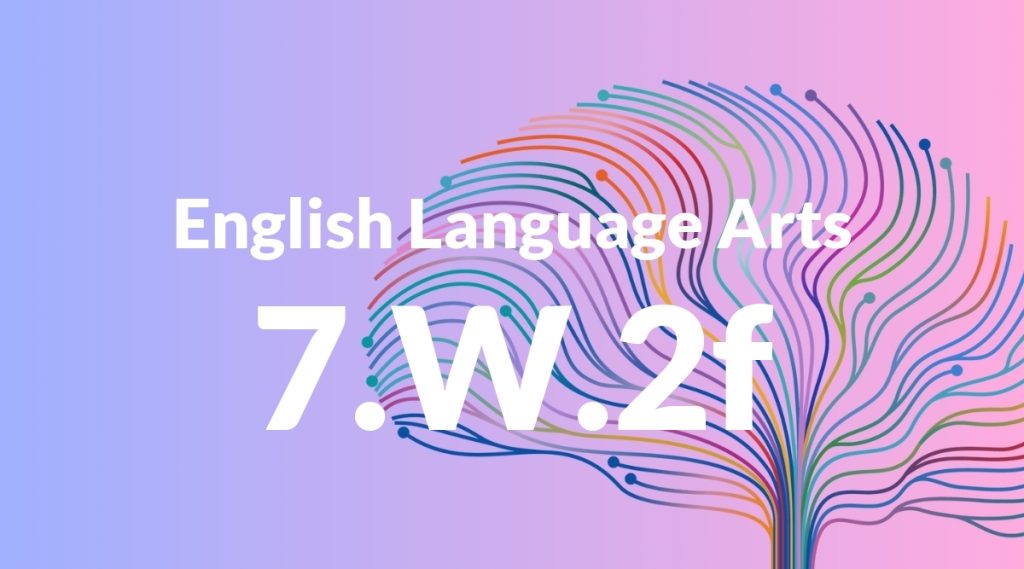Standard: 7.W.2f – Provide a concluding statement or section that follows from and supports the information or explanation presented.
Grade level: Grade 7
Subject: English Language Arts
Domain: Writing
Teacher Overview
This standard emphasizes the importance of a well-crafted conclusion in writing. It is critical for students to learn how to effectively wrap up their essays and other written pieces in a way that reinforces their main points and leaves a lasting impression. Mastery of this standard will enhance students’ overall writing skills and prepare them for more advanced writing tasks. Students need to have a solid understanding of essay structure, including how to write clear and coherent paragraphs. They should also be familiar with the purpose of introductions and conclusions.
After mastering this standard, students will be able to write more nuanced and sophisticated conclusions. They will integrate evidence more effectively and tailor their conclusions to different types of writing and audiences.
Common Misconception 1
A common misconception is that a conclusion is just a restatement of the main points. This is incorrect because a strong conclusion should not only summarize but also synthesize the information presented, providing a final insight or implication.
Intervention 1
Use mentor texts to show examples of effective conclusions that go beyond mere summary. Engage students in exercises where they practice writing conclusions that synthesize and provide final insights.
Common Misconception 2
Another misconception is that a conclusion is unnecessary if the body of the text is strong. This is incorrect because a conclusion is essential for reinforcing the main message and ensuring the reader understands the significance of the information presented.
Intervention 2
Provide students with examples of texts that lack conclusions and discuss how these texts feel incomplete. Encourage students to write conclusions for these texts and reflect on how the additions improve the overall piece.
Prerequisite Knowledge
Students should understand how to structure a paragraph and an essay, including topic sentences, supporting details, and transitions. They should also be familiar with the purpose of introductions and conclusions in writing.
Subsequent Knowledge
Students will develop the ability to create more nuanced and sophisticated conclusions, integrate evidence more effectively, and understand how to tailor their conclusions to different types of writing and audiences.
Instructional Activities
- Analyzing effective conclusions in mentor texts
- Writing multiple conclusions for a single essay topic
- Peer-reviewing and providing feedback on conclusions
- Creating graphic organizers to plan conclusions
- Practicing writing conclusions for different types of writing




